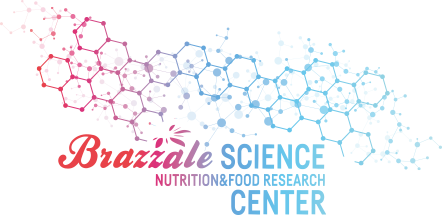Franz Halberg (*) was the first to define “circadian rhythm” as the sequence of responses of an organism to the passing of time over a 24-hour period. The term “circadian” was coined by taking the Latin phrase circa diem, meaning “about a day,” to study and refer to the different phenomena which an organism is subjected to, unconsciously, over the period of a day and night.
In most living organisms, the complex biochemical and physical transformations that affect vital organs, and that go by the name of “metabolism,” vary sensibly between day and night. The existence of a “cyclic rhythm,” differentiated by day and night, has been proven by the most recent studies on metabolism and, as regards “milk,” it has been ascertained that over a period of 24 hours even the chemical composition of milk produced by a living being undergoes changes. It can therefore be concluded that that day-milk differs from night-milk.
Easy-to-access analytical criteria can be applied to define the macronutrient composition of milk (lactose, protein, total solids), but it is not possible to detect significant quantitative variations for these categories of nutrients between the milk that a cow produces during the day and the milk it produces at night. More complex analytical methods (that go by the name of “metabolomics”) make it possible to study the composition of very small molecules and find that, for example, lipids, hormones and cytokines show “measurable” differences between day-milk and night-milk. This leads us to hypothesize that in the not too distant future, differentiation may also succeed in defining two different “qualities” in terms of image as well.
To support this, we can cite studies carried out by various researchers, which for the sake of scientific rigor are worth mentioning. Most of these have been published in the last twenty years. Already in 2004 the journal “Comparative Biochemical and Physiology” published a study by A. Alila-Johansson et al. on the subject of changes in the concentration of free fatty acids, glycerol and leptin in goat plasma, produced in different photoperiods. In 2005, G. Piccione et al. published a work in “Comparative Biochemical and Physiology” on the subject of temporal relationships concerning physiological variables in horses and sheep. In 2009, Y. Minami et al. in Proceedings of the National Academy of Sciences USA reported on measurements made by metabolomic methods on blood at times considered physiologically different, and S.K. Davies in 2014 published in the same journal a paper on the effects of sleep deprivation on human metabolism, showing that 60-70% of all metabolites in human blood oscillate according to circadian rhythms. Very recently, namely in 2020, in the journal “Milk and Health,” W. Willett and C. Ludwig argued that since the nutrients in milk are transported by the blood, it is logical to expect that changes in blood composition have an important influence on changes in milk composition.
Also included here are the results of a more recent study conducted by Z.W. Teng et al (Henan Agricultural University) and accepted for publication in the Journal of Dairy Science, issue 104, in March 2021.
In citing some of these findings, it is important to refer to an analytical indicator that can help to highlight oxidative stresses on lipids. This indicator is “malondialdehyde” (MDA), expressed analytically in ng/mL: this organic compound in night-milk is present in reduced concentrations compared to day-milk (in plasma, it is measured by fluorimetry, as published in J. Chromat. B775:121-126, 2002). The same applies to Glutathione Peroxidase (GSH-Px), the content of which is less in night-milk than in day-milk. Reference has been made to the unit of measurement in order to inform readers about the dimensions within which milk micronutrients play a fundamental role and of which consumers are still not sufficiently aware.
Moreover, it was shown by immunoenzymatic assay that night-milk is richer in interferon-ɣ (IFN-), a protein of the cytokine class that inhibits virus replication in infected cells and boosts the activity of cells involved in immune defense. It was also demonstrated that there tends to be a greater presence of some lipids in night-milk. As for melatonin (MLT), which is a mammalian pineal hormone present in the blood, it was also found that it is one of the most abundant components present in night-milk.
Ultimately, the difference between day-milk and night-milk lies in the content of at least 39 different metabolites, and night-milk has a greater content of unsaturated fatty acids and amino acids: among the latter, N(6)-methyllysine, l-alanine, taurine, and D-proline.
The conclusions reached by Z.W. Teng, which are supported by a substantial body of analytical results reported in his work, are in line with those of other researchers who, while limiting their research to determining the differences between day-milk and night-milk, have essentially demonstrated the rich composition in biologically active substances in milk, with techniques that are finally adequate today, and how these substances affect protein synthesis regulation and energy metabolism.
Today, only thanks to advances in analytical chemistry do we know more about which metabolites are carried in milk and about the influence of the intake of such a complex series of metabolites.
Therefore, in the light of the many works recently published, it is now possible to rediscover the good habit of drinking milk in the evening to help fall asleep more easily. This article is a prelude to a gradual and periodic discussion of analytical and nutritional issues that raise awareness on the need to know the food “milk” as an essential means to gain access to healthy nutrition and prevention.
(*) Franz Alberg, born in Born, Romania, in 1913, lived in Minneapolis (US) and was Professor at the University of Minnesota, where he founded the Chronobiology Laboratories. One of his works was “Wege zur Wissenschaft, Pathways to Science.”

